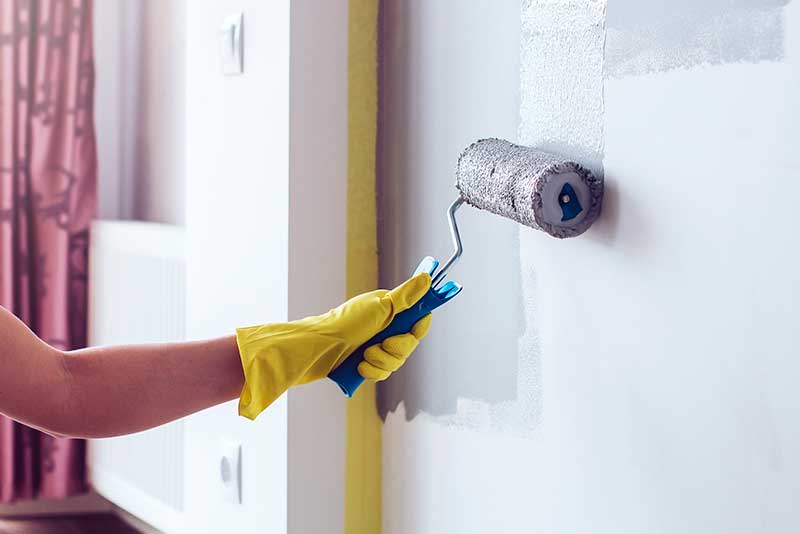
- Tue, Nov 2020
- |
- Mayas Painting
The key to achieving a smooth surface is to learn how to paint without streaks. It’s easier written than done. So, we’ll put our knowledge into words to teach you how to prevent lap marks, and this will help you create a uniform and professional coat appearance.
Do you want to learn how to paint without streaks? Four main ingredients that will help create a smooth finish are using professional tools, doing good preparation work, using the right sheen and high-quality paint, and proper painting techniques. Good luck!
So, let’s get into the details.
How to Paint Without Streaks?
- Use Good Paint Brushes & Rollers
- Prep the Wall Surfaces
- Use the Right Type of Paint
- Start Painting the Outline
- Paint in One Direction
- Use the Right Roller Technique
- Give Each Coat Enough Drying Time
- Sanding Between Coats
- Apply the Final Coat
How to Paint Without Streaks?: Start Rolling Toward the Perfect Finish!
Use High-Quality Paint Brushes
Low-quality brushes and rollers show paint strokes; need we say more? Fine, we will.
A good artist needs professional paint brushes. Michelangelo didn’t create the most delicate frescos using crappy brushes. What I am trying to say is that if you want a smooth finish, you need to use high-quality, if not professional, paintbrushes and rollers.
This will allow you to give gentle and consistent brush strokes.
Also, it would be best if you choose the right paintbrush (thickness and bristles) for the type of paint you are going to apply.
For instance, if you’re using Latex paint, you can use a nylon or polyester brush. For oil-based paints, we recommend that you use a natural bristle brush.
We highly recommend the brands Purdy and Wooster for DIY painting projects.
One of the best brushes for walls is:
Purdy 144400340 XL Series Swan Wall Paint Brush
The best paintbrush for edges and corners is:
Wooster Shortcut Polyester Angle Sash Brush
Our top pick for painting over trims, molding, and tight spaces:
Purdy 144080515 XL Elite Dale Sash Paint Brush
If you’re painting big and smooth walls, we recommend painting with a roller. You can use either of these two sets of rollers.
Wooster Brush RR721-9 Super Doo-Z Nap Rollers, 3/8-Inch, 6-Pack
Wooster Brush R751-9 50/50 Roller, 1/2-Inch Nap, 6-Pack, 9-Inch
Prep the Wall Surfaces
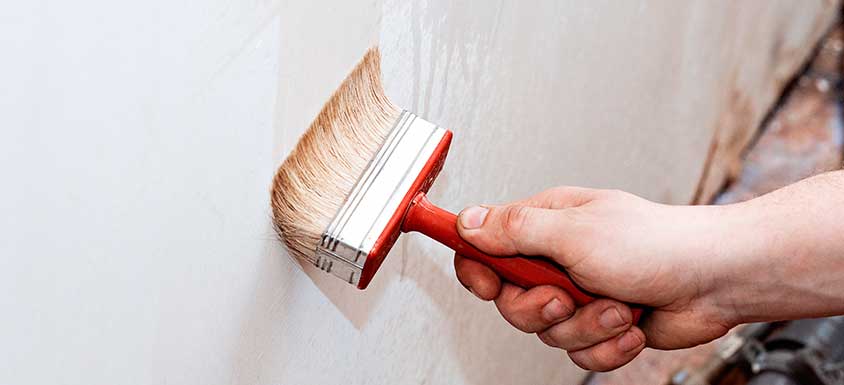
Make sure to prepare the walls before painting them. A good prepping of the wall surfaces will guarantee a smooth, colorful, and lasting paint job.
Before giving the first brush strokes, you need to sand the walls and eliminate all dirt, grime, mold, dust, and flaky paint. You should also repair any damage and use a primer to aid the coats of paint to stick or adhere to the surfaces, and then dry thoroughly.
If you make sure your wall surface is prepped and primed before you start painting, you’re taking a firm step to learning how to paint without streaks.
Use the Right Type of Paint According to Room to Be

What I am going to say is a no brainer, but still, it’s worth mentioning it.
Some paint projects are destined to fail even before giving the first brush strokes. But why? As we said, prepping the surfaces is crucial for lasting and neat painting results.
But that’s not all. Another tip on how to paint without streaks is to choose the right type of paint.
There are two aspects to consider when choosing paint. It would help if you always root for high-quality paint, and depending on the surface or room you are going to paint, you’ll have to choose the proper paint sheen.
You should invest a couple of dollars more for every can rather than ending up with a crappy paint job, full of lap marks.
Now let’s choose the perfect sheen type for your painting projects.
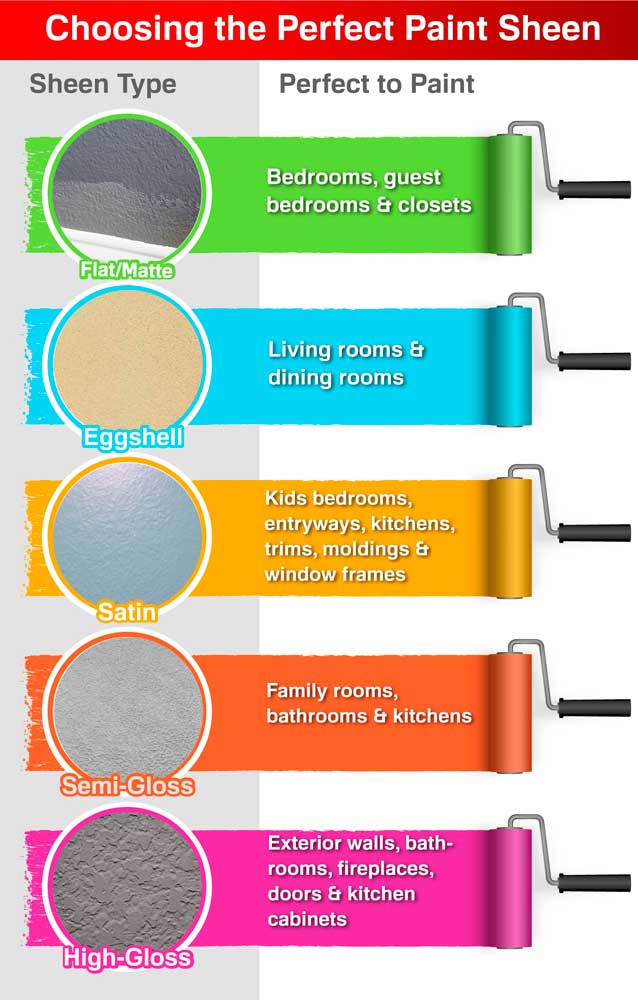
Here we’ll give you two last pieces of advice when picking paint. If you want to learn how to paint without streaks, you should stay away from chalky paint because it leaves ugly lap marks.
Last but not least, you should use a slow-drying paint. What happens is that fast-drying paints don’t dry evenly, leaving lap marks and making them harder to fix and create a smooth surface.
Time to Get into the Real Business of Painting the Wall
1. First Paint the Outline
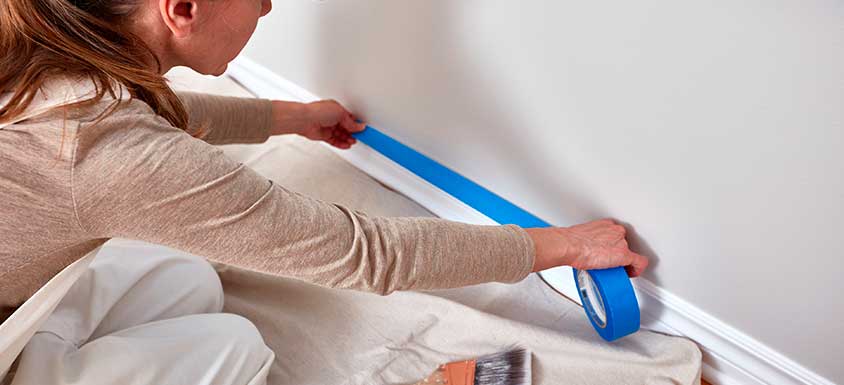
When you are going to paint a wall or a ceiling, you need to paint the outline. It would be best if you marked the perimeter of the surface to be painted—around the corners of the walls and from the ceiling down.
You can use the Wooster Shortcut Polyester Angle Sash Brush to define the edges, which can be about 4 inches wide.
This perimeter will give you room to maneuver without touching the ceiling, baseboard trim, or adjacent walls.
Don’t worry. The paint won’t dry quickly. When tackling big room surfaces, we recommend using rollers. In this way, the paint you first applied around the edges will still be fresh when you finish applying the first coat of paint onto the middle of the wall.
And in the end, you’ll have a seamless blend.
2. Time to Brush Up Your Painting Skills
As we said earlier, another essential ingredient to learn how to paint without streaks is brushing up your painting skills.
So, now, we’ll give you some painting tips on the proper roller techniques.
One thing is for sure; rollers are best for larger surfaces. You can paint faster, and if you need to touch up some details, you can later use a paintbrush.
If it’s your first time using a foam roller, make sure to practice on a piece of cardboard to learn how to use it properly.
3. Paint in One Direction
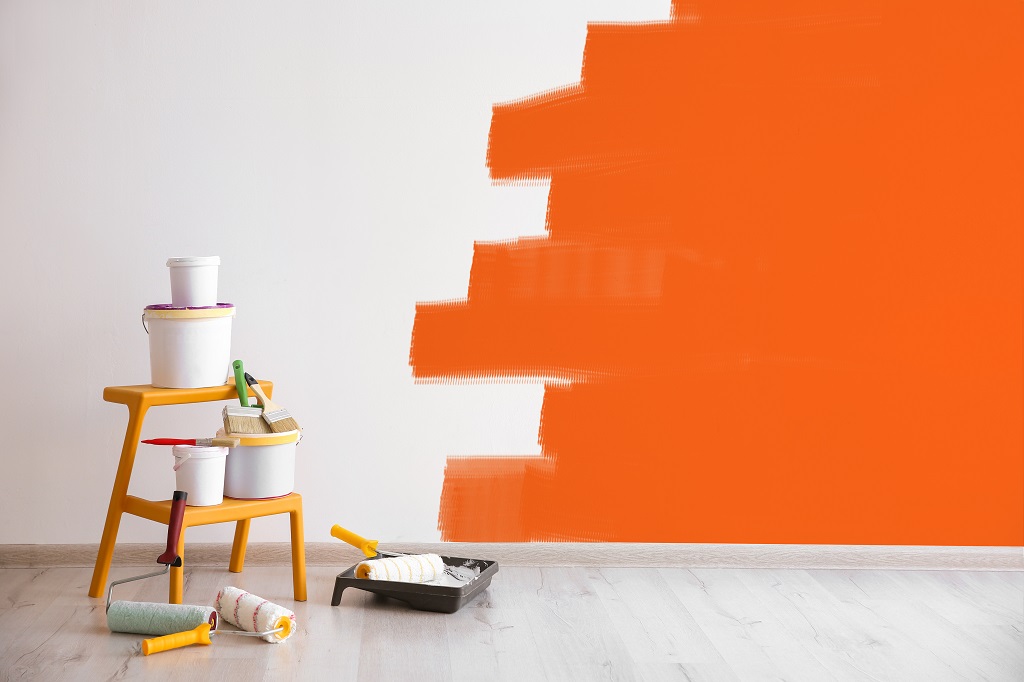
One of the best painting tips to avoid roller marks is to paint in one direction. If you want a streak-free surface, you need to keep consistent with this rule.
Even though this may sound evident to skilled painters, but for beginners, keep this in mind: painting in different directions causes streaks and lap marks all the time.
4. Use the Right Roller Technique
If you want to learn how to paint without streaks, you need to use the right roller technique.
Once you have ready your paint tray and your roller, you need to apply it on the surface.
The edges of your wall or ceiling should be still damp to blend perfectly and seamlessly with the first layer of paint.
Now, you can start painting the wall with your foam roller.
Slowly spread the paint on the roller in a single direction. We advise you to refill or dip the roller in the paint tray once you’ve covered a 3-foot wide section.
Every time you dip the roller back into the paint tray, start 3 feet away from the previously painted section and roll back into it so that the two areas overlap.
Make sure to spread out the paint in the overlapping sections to avoid thick borders.
Now that you finished applying the first layer of paint, we proceed with a super important recommendation.
5. Give Each Coat Enough Drying Time

Now, you may complete the steps above correctly and still mess up. But you may ask how? Why?
What happens is that if you don’t let the paint dry completely between coats, you’ll end up with streaks.
You can leave your surface smooth, use the best primer, and paint in one direction, but you need to let each coat dry properly.
Make sure that each coat is completely dried before you apply the next one. Some paints may take longer than others.
One important thing is that you should avoid applying more than two coats.
Some people paint a third coat, but that’s not recommended. Applying too much paint on your surface can make your final product look thick, chunky, and unappealing.
If you don’t give each coat enough drying time, then paint blocking occurs. Click on the following link to learn what paint blocking is and how to fix it.
As a result, you’ll have tacky paint that won’t dry. We also invite you to read our article to learn how to fix tacky paint.
6. Sanding Between Coats
One technique that is recommended to learn how to paint without streaks is sanding in between coats.
We advise you to sand after the primer dries. And then, you could sand between each coat. Of course, you should only sand completely dry paint. Otherwise, you’ll ruin your coat of paint!
Why is sanding such a good painting technique?
Sanding serves two purposes. One is to smooth the surface so that the second coat will be more even. Second, by roughing the surface gently with sandpaper, the next coat will adhere better.
7. Apply the Second and Final Coat
One of the best advices to achieve a smooth surface when you paint a wall is to apply two coats of paint as a maximum.
Follow the same process you did when applying the first coat. Paint in one direction and repeat the same roller technique we taught.
Once you finish applying the paint, you will have to wait around 4 hours until the final coat of paint dries.
Conclusion!
Do you want to learn how to paint without streaks? Well, we know you do. But don’t be afraid. We believe you have the skills and guts to start and complete this DIY project.
By following our painting tips, we’re certain you’ll end up with a smooth, streak-free surface.
Now, it’s time to put into practice what we taught you. Good luck!

